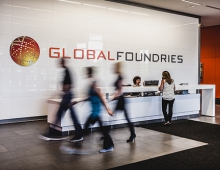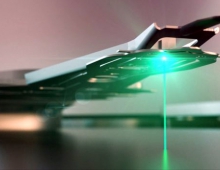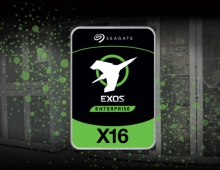
The 27th Magnetic Recording Conference Outlines Future Of Hard disks
This year's IEEE TMRC Conference at Stanford focused on "Enhanced future recording technologies for hard disk drives beyond 10 Tbyte capacity", spin transfer torque random access memory (STT-RAM), and other related topics. Approximately 36 invited papers were presented at the conference, which was held August 17-19, 2016.
With SSDs already sporting capacities up to 60 TB, hard disk makers are trying to increase in storage capacity in order to be competitive in storage footprint, although the price per GB of a 60 TB SSD remains significantly higher than for a 10 TB HDD.
Seagate Researchers advancing much beyond today’s 1.3 Tbpsi HDD areal density will require technologies beyond today’s perpendicular magnetic recording (PMR) that near-term include shingled magnetic recording and eventually 2-dimensional magnetic recording. These technologies are seen to get HDDs to about 1.5 Tbpsi.
Heat Assisted Magnetic Recording (HAMR) could be required to increase the capacity further. HAMR on conventional HAMR media can go to 4 Tbpsi, and with discrete dot media this may go to 10 Tbpsi or higher.
HAMR demonstrations have achieved 1.6 Tbpsi with 2,600 thousand flux changes per inch (kFCI) and 400 thousand tracks per inch (TPI). The first HAMR products should appear by 2017.
This Microwave Assisted Magnetic Recording (MAMR) has been also demonstrated on recording media. The principle here is to make conventional magnetic heads change the magnetization and write information using microwaves, rather than heat.
Researchers from Tohoku University presented some work on using MAMR to write individually on up to 3 layers of magnetic recording media where the individual layers can be tuned to particular microwave frequencies. Researchers from the National Institute for Materials Sciences from Tsukuba, Japan showed data from actual spin tunnel torque microwave generating devices that might be used for MAMR recording.
Spintronics is solid-state technology built around the use of electron spin rather than charge for various devices and circuits. Both processing as well as memory devices can be built using spin-based devices.
Everspin has already shipped over 60 M MRAM chips for many different cache and buffering applications.
Although the pace of magnetic recording development has slowed, many enterprise applications are looking for low cost storage using very large HDDs.





















